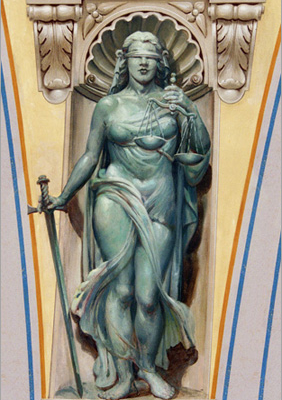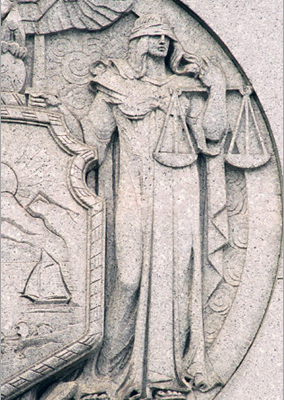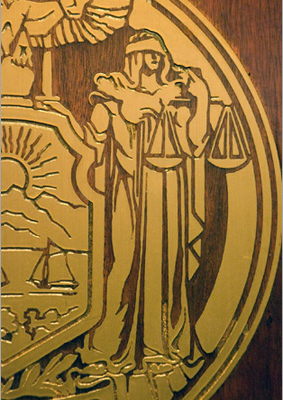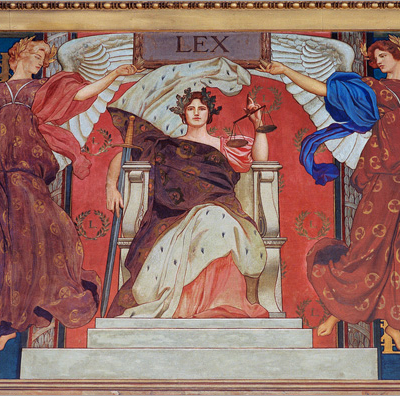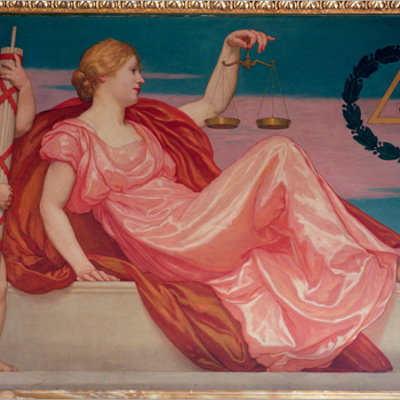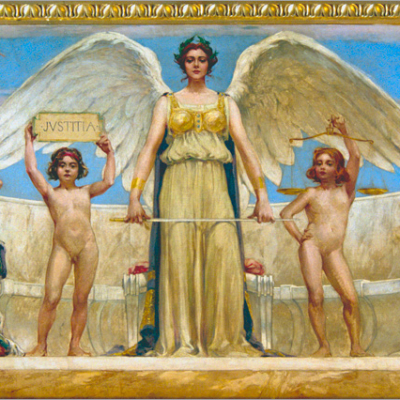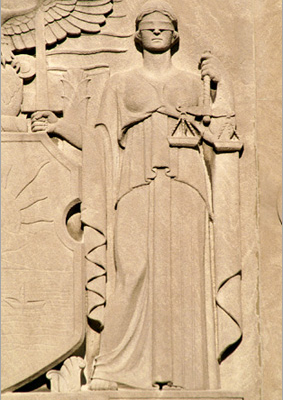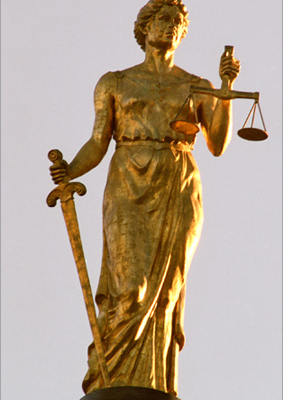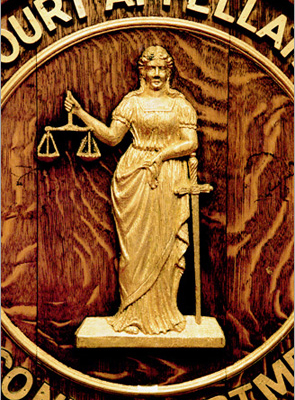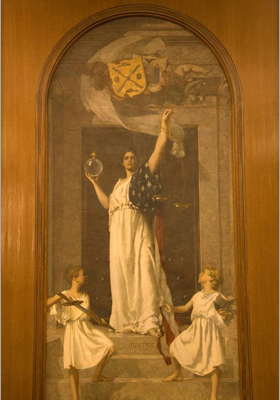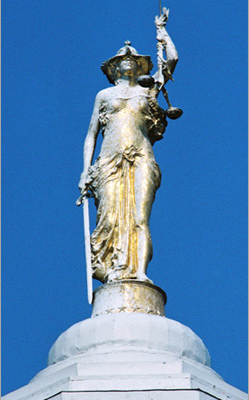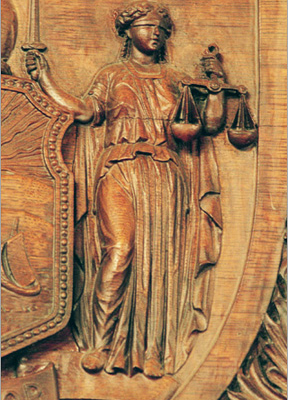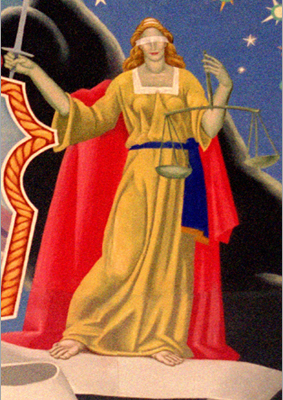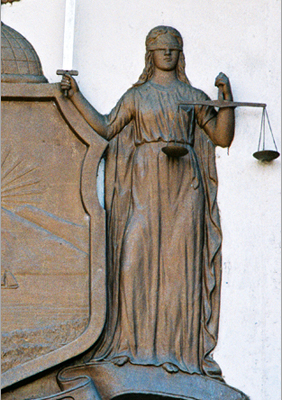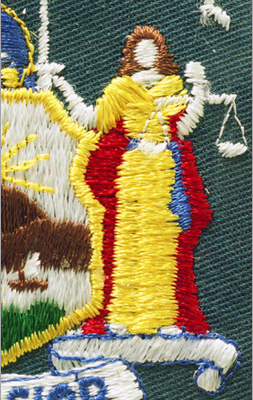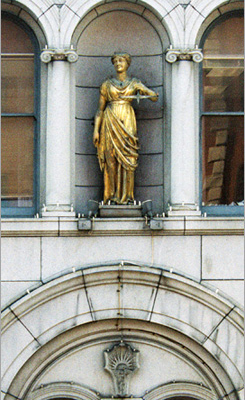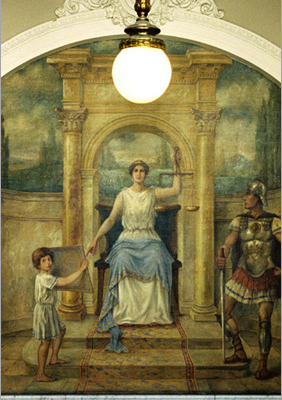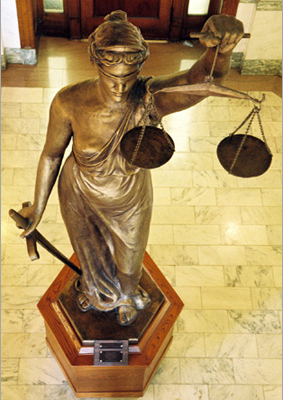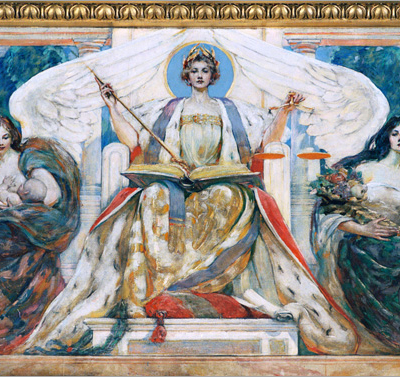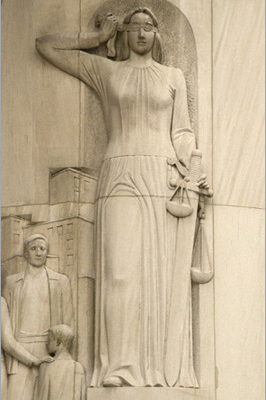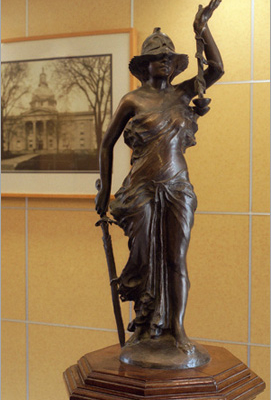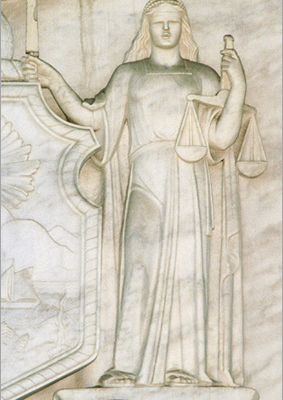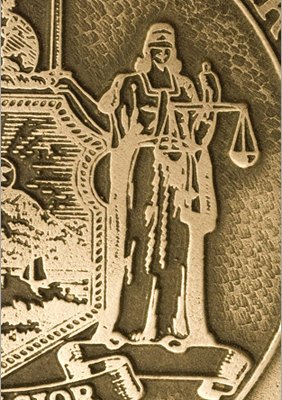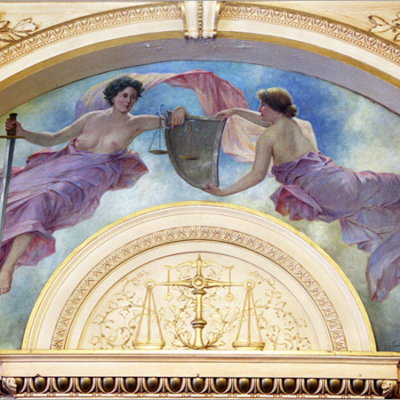From the dawn of civilization, justice has been conceptualized as a divinity linked to the cosmic order, but it is from the Greek and Roman goddesses of Justice that today’s iconic symbol derives. In Greek mythology, the goddesses of justice are Themis and her daughter DikÍ, also known as Astraea. In ancient Rome, DikÍ was known as Justitia and was a civil abstraction rather than a mythological deity.
Myth-making went hand-in-hand with the political propaganda of Renaissance Europe. In the emerging republics, Justitia became a powerful symbol of civil justice, while in the monarchies, Virgil’s vision of the Golden Age reborn and the myth of the return of Astraea gave support to the doctrine of the divine right of kings.
In the 17th century, New York was colonized, first by the Dutch and then by the English. Justitia, emblematic in both cultures, became iconic in the New World too. Following the Revolution, the New York State arms adopted on March 16, 1778, consisted of the State seal surmounted by an eagle on a demi-globe and supported by the figures of Liberty and Justice. Justice wears a gold-colored dress with a blue belt fringed in red. Her unbound hair is decorated with pearls, and there is a narrow band of cloth over her eyes. In her right hand she holds a gold-handled sword, and in her left, the scales.
For over two centuries, courthouses throughout New York have been adorned with portrayals of Lady Justice. The sculptures, carvings and murals, many by renowned artists, are our constant reminder that, in the words of George Washington: the due administration of justice is the firmest pillar of good Government.
